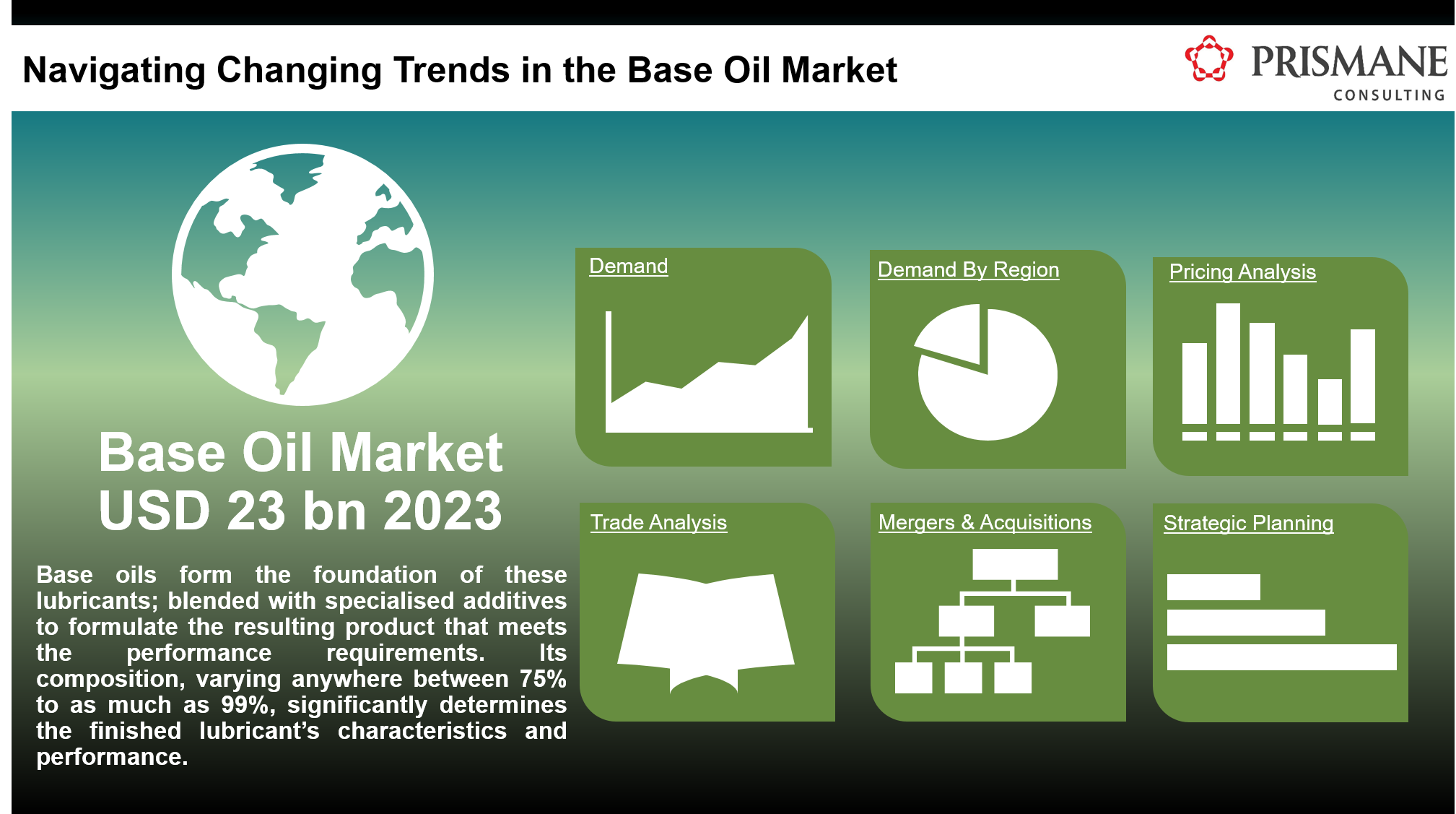Shifting Gears: Navigating the Shifting Currents of the Base Oil Market
The use of lubricants dates back to antiquity, from transportation to household to machinery. In today’s world with ever-expanding economies, the importance of proper lubrication has grown exponentially, with the generation of demand, and the development of newer technologies and application outlets.
Common finished lubricant products used today include motor oils, gear oils, industrial oils, marine engine oils, transmission fluids, process oils, and greases. Base oils form the foundation of these lubricants; blended with specialised additives to formulate the resulting product that meets the performance requirements. Its composition, varying anywhere between 75% to as much as 99%, significantly determines the finished lubricant’s characteristics and performance.
Driven by advancements in engine design as a result of stricter lubricant regulations, government mandates on emissions, and the pursuit of energy efficiency, the base oil market has witnessed a steady shift in demand from API Group I to Group II. Factor in unfavourable economics for refiners and the introduction of new processing technologies, and you see major restructuring and supply rationalisation as a consequence. The pace of this two decades long trend has been so unprecedented, that by the end of 2019, Group II capacity had surpassed that of Group I.
Global Paraffinic Base Oils Market, 2005-2024 (kilo tons)
Source: Prismane Consulting Capacity Database
While this may beget the assumption of Group I’s demise, Prismane Consulting does not expect the base stock to bite the dust so soon. While Group II and III are now preferred in engine oils formulations for their low viscosity and high oxidative stability, Group I base oils still hold a place in emerging markets like Asia Pacific, the Middle East, & Africa, where industrialization is booming and demand for monograde engine oils remains strong. In many of these markets, Group I oils still have an edge when it comes to applications requiring higher viscosity and greater solvency.
Global Paraffinic Base Oils Supply, 2005-2024 (kilo tons)
Source: Prismane Consulting Capacity Database
In the Asia Pacific, regions like China, Southeast Asia and India will remain dominant consumers and growth drivers in the Asia Pacific, thanks to their dense populations. Leading factors for this growth include rising disposable incomes, widening middle-class strata, and rapid urbanization. While restrictions imposed during the COVID-19 pandemic did stall growth pace and contract volumes, demand in the region has remained fairly resilient, even in the face of consequences from the Russia-Ukraine war.
Two-wheelers dominate the automotive fleet in regions such as the India sub-continent and Southeast Asia, and as such, Asia Pacific is the largest market for two-wheeler lubricants. With the explosion of e-commerce and food-delivery services, market in the region is likely to witness robust growth in the next decade. In the longer-term forecast, however, Prismane Consulting expects the EV transition to be a major impeding factor for growth, as governments ramp up efforts to meet their emission targets. Given the two-wheeler penetration in the region, its electrification is likely to outpace that of passenger cars. EV adoption in the region will also depend on a range of factors, including affordability, government incentives & subsidies, and a reliable charging infrastructure.
On the supply side, the global base oils market is undergoing significant restructuring, as oversupply begins to balance out and utilisation rates firm up. Persistent pressure stemming from sustainability concerns, newer processing technologies and the pursuit of better performance from original equipment manufacturers across sectors like automotive and industrial will lead to further closures of Group I plants. This will gradually transition Group I oils from being a commodity product to a more niche offering, addressing specific outlets where they continue to shine.
As demand for Group I base oils declines, refineries must decide whether to upgrade their plants to produce more Group II and III oils or face the prospect of falling behind. For lubricant manufacturers, staying ahead of the curve will require not just technical expertise but a keen understanding of market trends, logistical hurdles, and the changing needs of the global consumer base.

